Genre: Platform Developer: Biox Co., Ltd. Publisher: Sega of America Players: 1 Released: 1995
Ristar is a fantastic Genesis platformer, certainly one of the best looking and playing games on the system. From the opening “Play with me?” to his climatic battle against the villain Greedy, the little yellow star and his stretchy arms offered a gorgeous world and captivating gameplay. The game may have been neglected in the past due its late release and the incoming 32-bit hype, but looking at eBay prices, those days are long gone. People now know who the shooting star is, and the game is frequently among the list of Sega properties which has fans clamoring for a sequel. More Ristar would be great, but remember NiGHTS: Journey of Dreams? Golden Axe: Beast Rider? Yeah, maybe it’s best we leave things be lest we have the Sega of today taint another beloved but neglected franchise.
Thing is, Ristar already kind of has a sequel. Though not branded as such, the Game Gear release of Ristar features many new additions and levels to make it more than just a watered-down Genesis port. Even though the game takes its cue from its Genesis brother with most of the stages aping the style of their console counterparts, changes to the level design and gameplay has them feeling fresh, almost like new DLC courses using existing (albeit 8-bit looking) assets. Simply put, if you enjoyed Ristar on Genesis and have always wanted more, then you better stock up on batteries because this is as close as you’re going to get.
Game Gear Ristar starts off with an 8-bit version of the appropriately verdant Planet Flora; and the green fields, giant flowers, checkerboard hills, and general level layout will no doubt look familiar to those who stomped Greedy in the 16-bit game. Grab and head butt that blue blob enemy! Stretch and climb up those bars! Dodge that rabbit coming out of the bush! Evade that owl swooping in from the sky! Yet, wait, what’s this? The owl looks a bit… different. Some of these blue guys have helmets, and why are there stars everywhere? Some of the differences here are on account that the Game Gear game lacks the extensive editing it received when making its way over from Japan, so enemies such as the aforementioned owl (and Ristar himself) appear as they were intended, before Sega altered their sprites to appear angrier and more threatening to appeal to our Western bloodlust.
The other differences are due to developer Biox straying well off the 16-bit path, and the game is by and large better for it. You’ll encounter new enemy types, levels, and gameplay improvements throughout the portable adventure. Those “blue guys with helmets” can have their helmets picked up and used as an object, dispatching other enemies when thrown or used to trigger events in later levels. Cavemen-looking creatures have spears which can be picked up and thrown, providing a springy platform when they strike a wall just like the red plungers in Quackshot. You still can’t help but miss all the stuff which didn’t make the trip from the Genesis, but these portable enhancements help keep things interesting.
Each of the other planets included from the Genesis game feature similar enemy and design tweaks. The two 16-bit rounds which didn’t make the cut, Planet Undertow and Planet Scorch, are instead replaced with a new round, Planet Terra. Terra isn’t as much a planet as it is a pirate ship, a single stage which culminates in a battle against a pillow throwing enemy inspired by Planet Freon’s original boss, itself replaced with a time shifting rabbit. Terra only has one level (as opposed to two like every other planet) because Sega in its infinite wisdom decided to hide the first half of the planet – a world full of puffy clouds and rainbows – away from Western players. The stage is still present on the cartridge, but you’ll need a Japanese Game Gear (or Game Genie region code) to access it. Frankly, though I don’t wish to be denied content, the missing stage’s level design isn’t that good; and while the new planet definitely has some interesting features, the theme doesn’t mesh well with the rest of the game.
Although there’s quite a bit of 16-bit content left on the cutting room floor – almost all mini-bosses are gone as are level features like the lamp posts in Planet Flora and the small maze of retracting girders in Planet Automaton – what I miss the most in the portable Ristar are the absence of secret items buried in the scenery. These hidden goodies rewarded players for using Ristar’s stretchy arms to canvas a level, bashing his head into walls which otherwise may appear inaccessible to reveal bonuses such as 1-ups, health items, and extra points. I have always found Ristar‘s level design and gameplay encouraged going off the beaten path, and the aforementioned secret bonuses were a big part of making those detours such an enjoyable part of the game. The Game Gear rendition ditches those hidden items, and in their place, we get star-shaped trinkets scattered throughout each level. Ristar can collect 100 of these for an extra life just like pretty much every other platformer of the era. It’s a rather generic addition adding nothing of note to the game, particularly since Ristar can still find bonus items in chests throughout the game.
Beyond that platformer gameplay relic, the game is otherwise fantastic. Ignoring the Genesis comparisons (which is admittedly hard to do), the handheld Ristar looks great, simplifying the background detail to keep the foreground looking quite close to the Genesis game. The game scales down well on the tiny screen and is able to keep everything looking large while still providing a fun, playable experience (and avoiding the pitfalls of Sonic 2 and others). I do think the lack of parallax (reserved for only the last level) keep it looking a bit stiff, but the levels are colorful and varied with some impressive looking bits like the “wavy line” effects during some boss fights and the smooth animation of the giant gears in the snow fortress. The game is easily one of the best-looking titles on the system, and Ristar himself is large and well animated, still making snowmen on the snow stages and snapping his fingers to the music.
I don’t know how he can still enjoy the music though, because while the Game Gear does an admirable job with the game’s visuals, the music is rather lacking, more so if you’ve enjoyed the 16-bit soundtrack. The system just can’t handle the bright and richly layered audio of the original, and it shows. Too many background elements are lost, and the notes sound harsher, distorted, and bare. Stuff like “On Parade” are just arranged more instrument channels which the system lacks, and you really miss Ristar chiming in on the opener “Play! Play! Play!” and “Du-Di-Da!” I really wish Sega had taken more liberties with the soundtrack as it did with the levels to create something more pleasing to listen to beyond settling on the recognizable but often jarring renditions we have here.
Audio complaints aside, the music is still decent, and Game Gear Ristar has far more in its favor than that which it lacks. Let’s face it — no one’s going to choose the Game Gear Ristar over the Genesis one, but Ristar isn’t a Highlander, and there needn’t be only one. Game Gear Ristar is a good-looking and playing platformer in its own right and is among the best games available on the system. You won’t hear him inviting you to play with him from the Game Gear speakers, but his portable outing is definitely one you’ll want to join him on.
SCORE: 8 out of 10

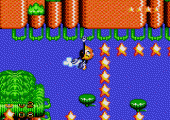
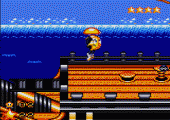
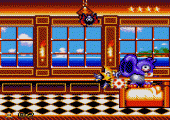
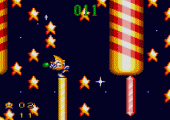
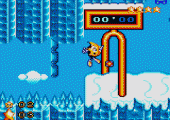
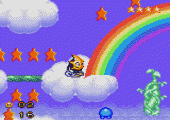
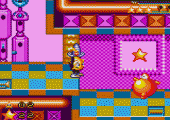
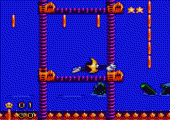
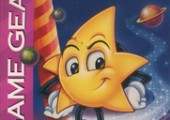
Recent Comments